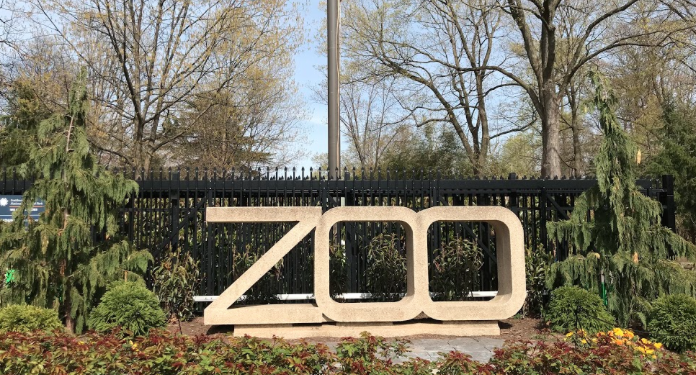By Alexander Kenny, Columnist
The Mason pond seems like a serene lunch spot. The ducks are polite, they quack sparingly, and they usually defer right of way when we cross paths. They are grateful when I skip wheat slices towards them. Conversely, the Mason geese perpetually honk like the loudmouth student from Workshop class. Geese approach in gangs, lunge for your sandwich, and peck your knees. There is no Jane Goodall or Dian Fossey for geese because life with geese is thankless.
Disappointed with suburban animals, I visited the Smithsonian National Zoo to reignite my love for animals. The late semester homework avalanche fades when you see elephants kicking pumpkins. An elephant standing just fifty feet away takes your breath away like no television footage can. You’re not supposed to feed the animals, but he who flings Cracker Jack earns the most elephant attention and trumpeting.
First, let me clear up the major complaint about zoos. Animals aren’t jailed for our entertainment. A zoo functions primarily as a giant veterinary hospital and learning center. They promote interest in science and conservation. Under zoo care, species increase in number. The lounging, fattened tigers would surely prefer the wild to their comparatively tiny “habitats,” but in a zoo, their cubs will live instead of being eaten by other tigers.
The Zoo houses seven elephants, seals, otters, alligators, zebras, leopards, cheetahs, lions, tigers, and everybody’s perplexing favorite: giant pandas. The Washington panda craze began April 20, 1972 with the arrival of pandas Ling-Ling and Hsing-Hsing. There are 24-hour panda cams if you like watching black and white fur snooze all day. The pandas won’t mate, so biologists regularly inseminate Mei Xiang whether she wants to be a momma or not. Mei Xiang’s situation resembles “The Handmaid’s Panda” and it troubles me more than species captivity. However, option B is a panda-less world. Artificially inseminating pandas in captivity is more effective than dosing males with panda Viagra (a real thing). According to the World Wildlife Fund (WWF), fewer than 2,000 giant pandas are left; 300 of them in captivity. In 2006, 30 pandas were born in China zoos from artificial insemination, beginning a panda population recovery that hasn’t slowed.
Today, giant pandas are poster animals for the vulnerability of all species. They are vegetarian bears, so docile they poke at a flopping salmon as if it was an old tire. I dislike pandas for the opposite reason I dislike geese. Geese are unnecessarily aggressive and pandas are pathetically passive. I prefer the cuddly panda, a buoyant vegetarian capable of destruction who has not once hassled me for bread or tipped over my canoe.
The Washington Zoo no longer houses two favorites, hippo and giraffe, but there are plenty new attractions. The vultures at the Bird House will show off when visitors approach by spreading seven-foot wings. Alligators lurk like ancient monsters and snakes coil and taste the air at the Reptile House.
A Zoo date will melt anyone with a weakness for critters. Consider this option for Date #2 after you’ve made it past the requisite horrifying coffee date. Consider the metro (Woodley Park-Zoo station on the Red Line) because D.C. traffic is ghastly. You’ll need six hours to see everything, so wear sunscreen and comfortable shoes because you will walk over ten miles between habitats. Skip the boring conversation about yourselves and have fun seeing creatures. Conversation is somehow easier when there is an elephant in the room. If the animals have sex right in front you (and they will), squeeze out of the date awkwardness with “that’s not how I would do it at all.” Say the same thing when the animals defecate during your date. Zoo admission is free, but pack a picnic lunch. Any opportunity to make food for one another demonstrates nurturing. Plus, it’s uncomfortable buying $18 chicken tenders next door to the ornithological observatory.
Photo by Allie Thompson



